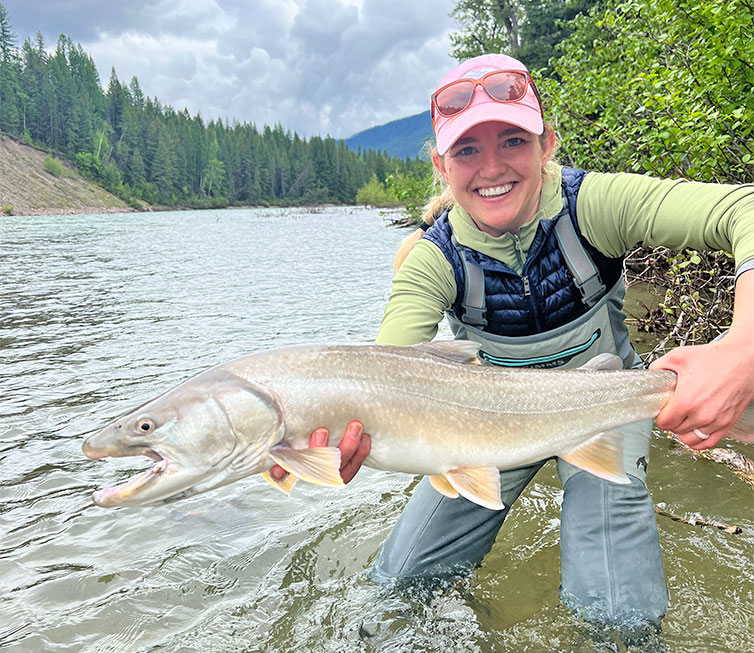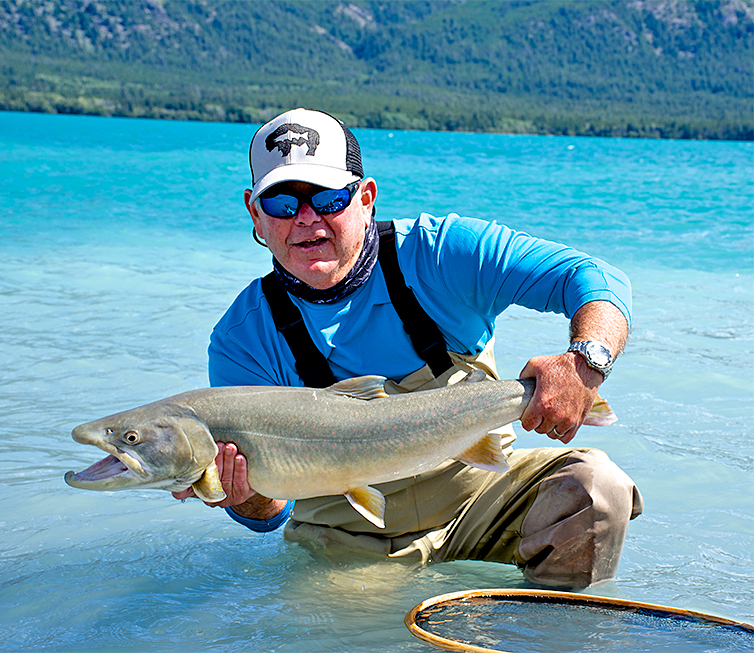The bull trout (Salvelinus confluentus) is a char of the family Salmonidae native to northwestern North America. Historically, S. confluentus has been known as the “Dolly Varden” (S. malma), but was reclassified as a separate species in 1980. Bull trout are listed as a threatened species under the U.S. Endangered Species Act (1998) and as vulnerable on the IUCN Red List of Threatened Species.
Bull trout have exacting habitat demands, requiring water temperatures generally below 55 °F (13 °C), clean gravel beds, deep pools, complex cover such as snags and cut banks, and large systems of interconnected waterways to accommodate spawning migrations. Thus, they favor the deep pools of cold lakes and large rivers, as well as high, cold mountain headwaters. Bull trout may be anadromous in coastal rivers, and individual bull trout have been found to have migrated from one coastal river to another by the ocean.
The species historical range included Alaska, California, Idaho, Montana, Nevada, Oregon, Washington and western Canada. Although there are fishable populations in British Columbia, most of the Bull trout are protected and cannot be targeted, except in a few designated systems where populations are healthy. A few are even thriving like the South Fork of the Flathead, one of the few systems in the Lower 48, where you can target Bull Trout.






